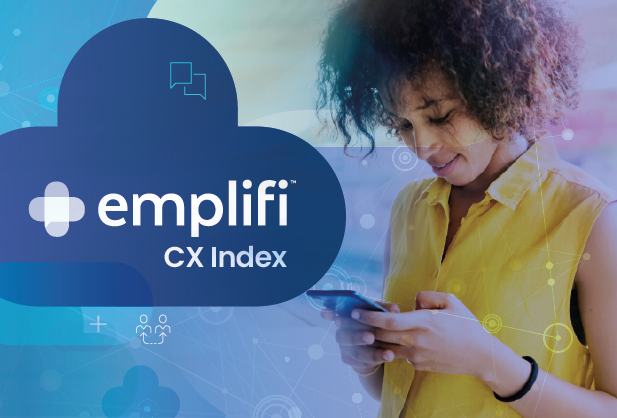Measuring your brand health across ever-evolving social and digital landscapes is as difficult and time-consuming as it is crucial for marketing teams today. And with new social channels popping up seemingly all the time, not only is technology not making it any easier to understand the full scope of your brand’s social media world, it’s making it that much bigger of a challenge.
Rendering all these different dashboards is driving you crazy, and it’s keeping you from being able to do your job well. What you need is to have all your channel analytics together in one place and for them to be dynamic — updating as fast as the API allows — so you can get the insights you need at the moment you need them.
Let’s talk about how that sort of unified analytics would help you get more done, and do it better every day.
4 benefits of unifying your social media analytics

1. High-level dashboards and reports
In a competitive world, your brand is almost certainly like most in spreading its message across various social media channels. You probably have an active presence on Instagram and Facebook. You might have your TikTok strategy up and running, and you’re also utilizing Twitter (rebranded as X). Even if you stop there, that’s four distinct social channels with different purposes, looks, and strategies — with no immediate way to connect all that native data.
That means that you have to render dashboards for each channel, paying for various business intelligence tools to attempt to bring it together to try to make them presentable to your team as they look to discuss performance. With completely siloed analytics from these various channels, most brands are using metaphorical rolls of tape and balls of twine to pull all these numbers together in a way that’s digestible, costing precious time, money, and frustration.
Unifying those metrics into one cohesive social media analytics dashboard would save them a ton of functional time and keep a better pulse on brand health across channels while cutting down on data overload. With consolidated insights and AI enhancements like sentiment analysis, automated labeling, spike alerts, language detection and translation, as well as post-performance scoring, you can focus on the data that matters for your brand's goals — deep diving where you need to — instead of sorting through mountains of data to gain a single view of the customer journey.
You can get reports delivered daily instead of monthly or quarterly, giving you a more up-to-the-minute feel for the status of your programs, helping you make adjustments before they’re even needed. If that’s automated, suddenly it’s just about the creativity of your team. You can stay high level instead of getting into the weeds, figuring out new ways to engage with your customers and using the unified dashboards to sell that vision to leadership
2. Collaboration between teams
It’s not just the social media team that needs the information provided by these various channel analytics. The teams for user-generated content (UGC), influencer marketing, product, and commerce, just to name a few, all need access to the same information — often at the same time — but they’re all working in individual silos.
These teams are wasting time getting insights from different departments and trying to bring them together to try to make some sort of sense of it. They need to be able to share the insights with different partners too, but it takes an exorbitant amount of time and effort just to mold it into something anyone can make sense of, much less glean any useful insights from.
With unified analytics, though, you could customize dashboards to send off to an agency or for disparate team needs, so you’re not overloading everyone with a million spreadsheets and graphs even you can’t fully explain.
You could sort through everything you need and just pick out those important insights, regardless of team or channel. Derive the actionable insights as those individual teams need them — with the integrated data tied directly to their needs and use cases. It enables teams to be proactive instead of waiting weeks for compiled reports to be created.
3. Crisis management and opportunities
Here’s a scenario for you — Let’s say your commerce team sees you’re getting good web traffic and conversions on a new pair of sneakers. Great news. But meanwhile, the service center is hearing from an influx of people who want a different color of laces, and the chatter about the laces not looking good with the shoes has started on social media. Not exactly a crisis, but what are you doing with this information?
If the Service and Social teams aren’t sharing it with Commerce until a month later, they’re missing an opportunity to set up a bundle to encourage people to buy the shoes with the laces they want. And it could be even worse if you don’t have the color that’s being requested in stock, and your Product team and Buyers have no idea it’s even in demand until it’s too late.
How does this change with unified analytics, though? You have insights coming in on campaigns where people are talking badly about these sneakers, but there haven’t been a lot of calls yet. When the analytics are unified across channels and teams, it’s simple to share that information immediately with Service, so they can be proactive when the calls start arriving. Then they can let customers know that they’re aware of the issue and have a deal ready for the new laces. And Commerce can pull the product down — or make a quick adjustment — right away, so any backlash is headed off quickly.
The longer you’re waiting for those reports to come in, the more time (and revenue) you’re wasting in responding. With everything in the same place, there’s no delay. Everyone has the same information at the same time.
4. Marketing independence
Do you like taking that walk down the hall to ask the data team for help (again) with pulling analytics together from all the siloes? You know you’re not their highest priority, and now you’ve got to wait until they can work through all their other tickets and get to yours. Instead of moving fast, you’re sitting on your hands. Who knows what you’re missing while you do? And, by the time you actually get the data from them, it’s already outdated.
This isn’t anybody’s fault, really. It’s just the way the social channels are set up. But the insidious thing about it is that so many marketers think this is the way it has to be. There’s no getting around it. It’s the way it’s been as long as they’ve been in marketing, and it’s a pain that can’t be avoided. They settle because they think they have to settle.
With unified analytics, though, you don’t have to rely on the data team. Now, you can move faster, without having to wait on them to cobble everything together. Not only will you be able to make quicker, more timely and accurate decisions, but you’re not going to miss a major data point while you wait to get what you need. Every marketing team knows how much more you can get done if you can increase your independence and just do it yourself.
Save the data team asks for those times when you really need it. They’ll appreciate it too.
The takeaway
The marketplace is simply too competitive to constantly have to wait to get access to a unified set of data. And if your competitors already have their data siloes torn down, you can’t afford to lag behind. Emplifi’s new Unified Analytics tool can deliver all this and more for your team, and it’s included for all Emplifi customers.
If you’d like to learn more about how it might help you, let’s talk.


































